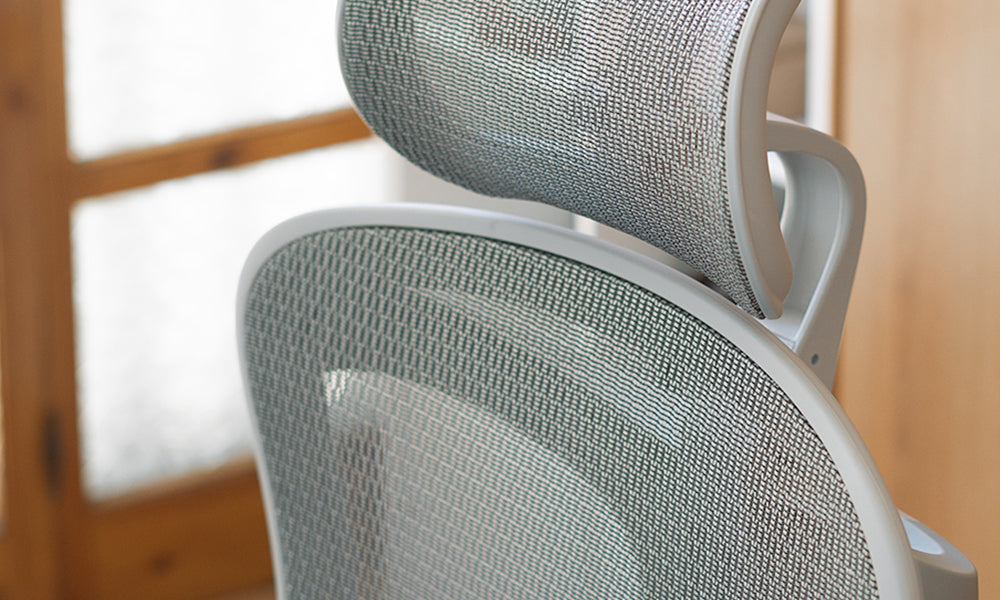In the dynamic world of office furniture, where comfort meets productivity, ergonomic office chairs have emerged as the undisputed champions. As professionals spend more time than ever before seated at their desks, the demand for chairs that prioritize both health and productivity has skyrocketed. In this comprehensive guide, we will delve into the intricacies of ergonomic office chairs, exploring why they have become the most popular type of chair in modern workplaces.
The Rise of Ergonomic Office Chairs
The concept of ergonomic design has gained immense popularity in recent years, and nowhere is this more evident than in the realm of office furniture. Ergonomic office chairs are designed with the human body in mind, offering optimal support to reduce the risk of musculoskeletal disorders and enhance overall well-being.
Understanding Ergonomics
Ergonomics is the science of designing tools, equipment, and furniture to maximize efficiency while minimizing the risk of discomfort or injury. In the context of office chairs, ergonomic design focuses on adapting the chair to the natural movements and postures of the human body, promoting a healthier and more comfortable work environment.
Health Benefits of Ergonomic Chairs
Ergonomic office chairs are renowned for their ability to support proper posture, which is crucial for preventing back, neck, and shoulder pain. These chairs often feature adjustable components such as lumbar support, armrests, and seat height, allowing users to customize the chair to their unique body dimensions.
Moreover, ergonomic chairs promote better circulation and reduce the likelihood of developing conditions like carpal tunnel syndrome. By encouraging a more natural sitting position, these chairs contribute to improved spinal alignment, reducing the strain on the lower back.
As awareness of the health benefits of ergonomic chairs has grown, so too has their popularity among individuals and businesses committed to prioritizing the well-being of their employees.
The Anatomy of Ergonomic Office Chairs
Lumbar Support
One of the key features that set ergonomic office chairs apart is the incorporation of lumbar support. The lumbar region, or lower back, is particularly susceptible to strain during prolonged periods of sitting. Ergonomic chairs are designed to provide adequate support to the natural curve of the spine, preventing slouching and promoting a healthy posture.
Adjustable Features
Customizability is a hallmark of ergonomic office chairs. These chairs typically come equipped with a range of adjustable features, including seat height, armrests, and tilt mechanisms. The ability to tailor the chair to individual preferences ensures that users can create a workspace that suits their unique body dimensions and comfort requirements.
Material and Construction
Ergonomic chairs are crafted from high-quality materials that prioritize durability and comfort. Mesh upholstery is a popular choice for its breathability, while cushioned seats provide added comfort during extended periods of use. The construction of the chair is often robust, ensuring longevity even in high-intensity work environments.
The Impact on Productivity
Reducing Fatigue and Discomfort
Traditional office chairs, lacking the ergonomic design principles, can contribute to fatigue and discomfort, leading to decreased productivity. Ergonomic chairs, by contrast, are specifically engineered to minimize strain on the body, allowing users to remain focused and energized throughout the workday.
Enhancing Concentration and Task Performance
The comfort provided by ergonomic chairs extends beyond physical well-being; it also positively influences mental acuity. When employees are comfortable and supported in their seating, they can direct their full attention to tasks at hand, leading to improved concentration and overall task performance.
As organizations recognize the direct correlation between employee well-being and productivity, the adoption of ergonomic office chairs has become a strategic investment in cultivating a more efficient and engaged workforce.
Choosing the Right Ergonomic Chair
Consideration of Individual Needs
Selecting the right ergonomic chair involves considering the unique needs and preferences of each user. Factors such as height, weight, and any existing health conditions should be taken into account. Some chairs may offer additional features, such as adjustable headrests or reclining capabilities, catering to specific comfort requirements.
Trial Periods and Reviews
Given the personal nature of comfort preferences, it is advisable to provide employees with the opportunity to try out different ergonomic chairs before making a final decision. Additionally, researching and reading reviews can offer valuable insights into the experiences of others, helping organizations make informed purchasing decisions.
Conclusion
In the fast-paced and demanding landscape of modern workplaces, ergonomic office chairs have emerged as the go-to solution for fostering both employee well-being and productivity. The surge in popularity of these chairs reflects a growing awareness of the importance of creating a work environment that prioritizes health and comfort.
As businesses continue to invest in the welfare of their employees, ergonomic office chairs will likely remain the top choice for those seeking a perfect blend of functionality, style, and health-conscious design. The journey towards a more comfortable and productive workspace begins with the careful selection of the right ergonomic chair, ensuring that each professional can thrive in an environment that supports their physical and mental well-being.
The Rise of Ergonomic Office Chairs
The concept of ergonomic design has gained immense popularity in recent years, and nowhere is this more evident than in the realm of office furniture. Ergonomic office chairs are designed with the human body in mind, offering optimal support to reduce the risk of musculoskeletal disorders and enhance overall well-being.
Understanding Ergonomics
Ergonomics is the science of designing tools, equipment, and furniture to maximize efficiency while minimizing the risk of discomfort or injury. In the context of office chairs, ergonomic design focuses on adapting the chair to the natural movements and postures of the human body, promoting a healthier and more comfortable work environment.
Health Benefits of Ergonomic Chairs
Ergonomic office chairs are renowned for their ability to support proper posture, which is crucial for preventing back, neck, and shoulder pain. These chairs often feature adjustable components such as lumbar support, armrests, and seat height, allowing users to customize the chair to their unique body dimensions.
Moreover, ergonomic chairs promote better circulation and reduce the likelihood of developing conditions like carpal tunnel syndrome. By encouraging a more natural sitting position, these chairs contribute to improved spinal alignment, reducing the strain on the lower back.
As awareness of the health benefits of ergonomic chairs has grown, so too has their popularity among individuals and businesses committed to prioritizing the well-being of their employees.
The Anatomy of Ergonomic Office Chairs
Lumbar Support
One of the key features that set ergonomic office chairs apart is the incorporation of lumbar support. The lumbar region, or lower back, is particularly susceptible to strain during prolonged periods of sitting. Ergonomic chairs are designed to provide adequate support to the natural curve of the spine, preventing slouching and promoting a healthy posture.
Adjustable Features
Customizability is a hallmark of ergonomic office chairs. These chairs typically come equipped with a range of adjustable features, including seat height, armrests, and tilt mechanisms. The ability to tailor the chair to individual preferences ensures that users can create a workspace that suits their unique body dimensions and comfort requirements.
Material and Construction
Ergonomic chairs are crafted from high-quality materials that prioritize durability and comfort. Mesh upholstery is a popular choice for its breathability, while cushioned seats provide added comfort during extended periods of use. The construction of the chair is often robust, ensuring longevity even in high-intensity work environments.
The Impact on Productivity
Reducing Fatigue and Discomfort
Traditional office chairs, lacking the ergonomic design principles, can contribute to fatigue and discomfort, leading to decreased productivity. Ergonomic chairs, by contrast, are specifically engineered to minimize strain on the body, allowing users to remain focused and energized throughout the workday.
Enhancing Concentration and Task Performance
The comfort provided by ergonomic chairs extends beyond physical well-being; it also positively influences mental acuity. When employees are comfortable and supported in their seating, they can direct their full attention to tasks at hand, leading to improved concentration and overall task performance.
As organizations recognize the direct correlation between employee well-being and productivity, the adoption of ergonomic office chairs has become a strategic investment in cultivating a more efficient and engaged workforce.
Choosing the Right Ergonomic Chair
Consideration of Individual Needs
Selecting the right ergonomic chair involves considering the unique needs and preferences of each user. Factors such as height, weight, and any existing health conditions should be taken into account. Some chairs may offer additional features, such as adjustable headrests or reclining capabilities, catering to specific comfort requirements.
Trial Periods and Reviews
Given the personal nature of comfort preferences, it is advisable to provide employees with the opportunity to try out different ergonomic chairs before making a final decision. Additionally, researching and reading reviews can offer valuable insights into the experiences of others, helping organizations make informed purchasing decisions.
Conclusion
In the fast-paced and demanding landscape of modern workplaces, ergonomic office chairs have emerged as the go-to solution for fostering both employee well-being and productivity. The surge in popularity of these chairs reflects a growing awareness of the importance of creating a work environment that prioritizes health and comfort.
As businesses continue to invest in the welfare of their employees, ergonomic office chairs will likely remain the top choice for those seeking a perfect blend of functionality, style, and health-conscious design. The journey towards a more comfortable and productive workspace begins with the careful selection of the right ergonomic chair, ensuring that each professional can thrive in an environment that supports their physical and mental well-being.






Dejar un comentario
Este sitio está protegido por hCaptcha y se aplican la Política de privacidad de hCaptcha y los Términos del servicio.